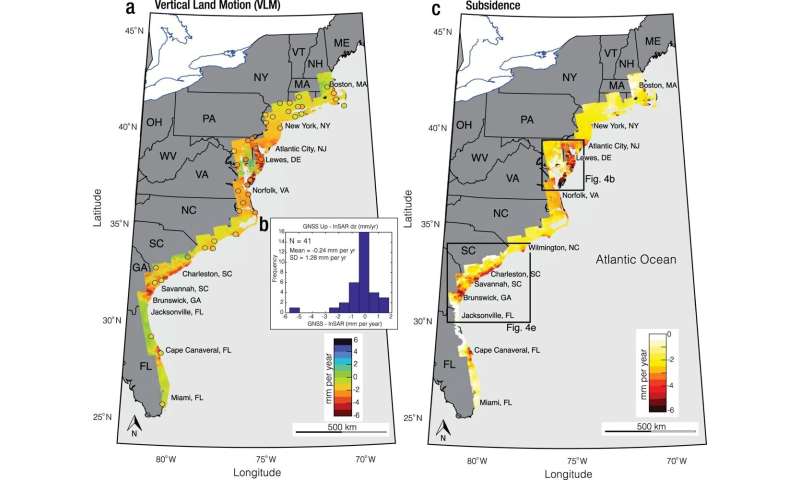Best of Last Week—Coastal sinking, nuclear power is least damaging, vitamin deficiency link to double-jointedness

It was an interesting week for Earth science as a team with members affiliated with several institutions in the U.S. found that warm liquid is spewing from the seafloor off the coast of Oregon due to the Cascadia fault line. They suggest that the seeping, chemically distinct liquid shooting up from beneath the seafloor could offer clues about earthquake hazards. Also, a team at Virginia Tech's Earth Observation and Innovation Lab, using satellite data, measured the degree to which areas along the coastal United States are sinking. They found that some are sinking as much as 2 mm a year, and they note that this puts these areas at increased risk of flooding as ocean levels rise due to global warming.
In technology news, the Norwegian University of Science and Technology, collaborating with the Grenoble Institute of Technology, found that nuclear power causes the least damage to the environment. And a team at Meta unveiled a powerful new Meta AI tool capable of identifying individual items within images—a major advance in one of technology's tougher challenges. Also, a team at Amazon created a new user-centric simulation platform to develop embodied AI agents for use with AI powered robots. And a team of engineers at Istituto Italiano di Tecnologia designed and built a rechargeable battery made from food.
In other news, a team at Rutgers University found evidence via a sampling study suggesting that those people who avoided COVID-19 precautions early in the pandemic were also more likely to be people who purchase firearms. And a combined team from Mile High Labs and the University of Northern Colorado, found that THC potency was lower than labeled at random dispensaries in Colorado. Also, a team of Houston Methodist nanomedicine researchers designed and built an implantable medical device smaller than a grain of rice that has been shown to shrink pancreatic tumors. It delivers CD40 monoclonal antibodies. And finally, a team at Tulane University wondered whethera vitamin deficiency could cause 'double-jointedness' and hypermobile Ehlers-Danlos syndrome. They found evidence that indeed it might, due to a genetic variant.
© 2023 Science X Network